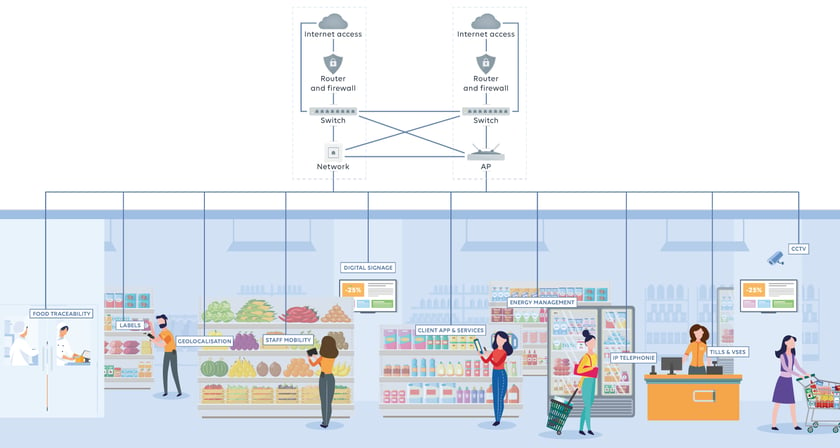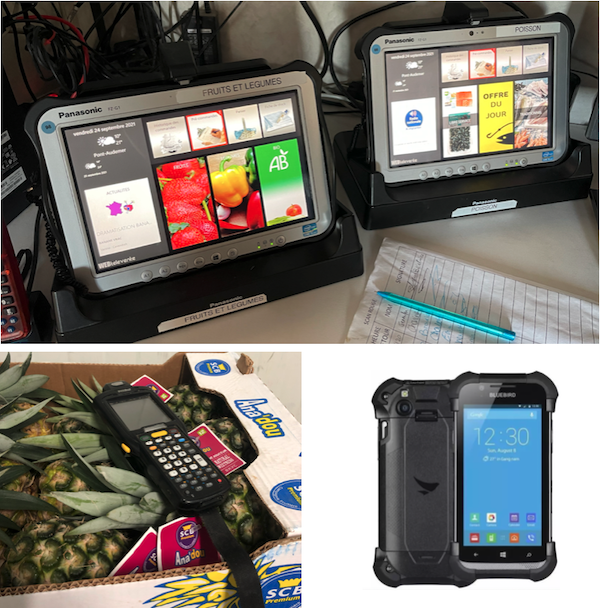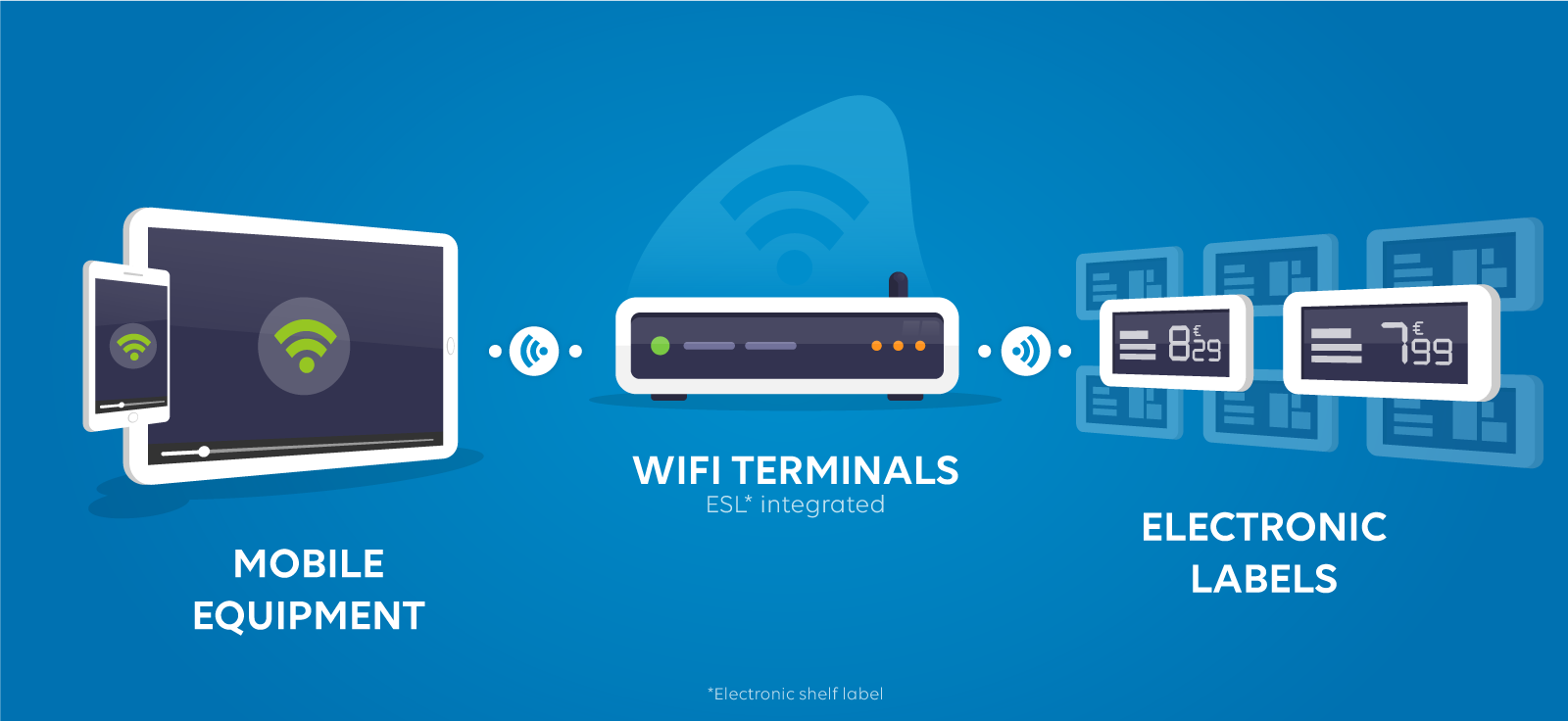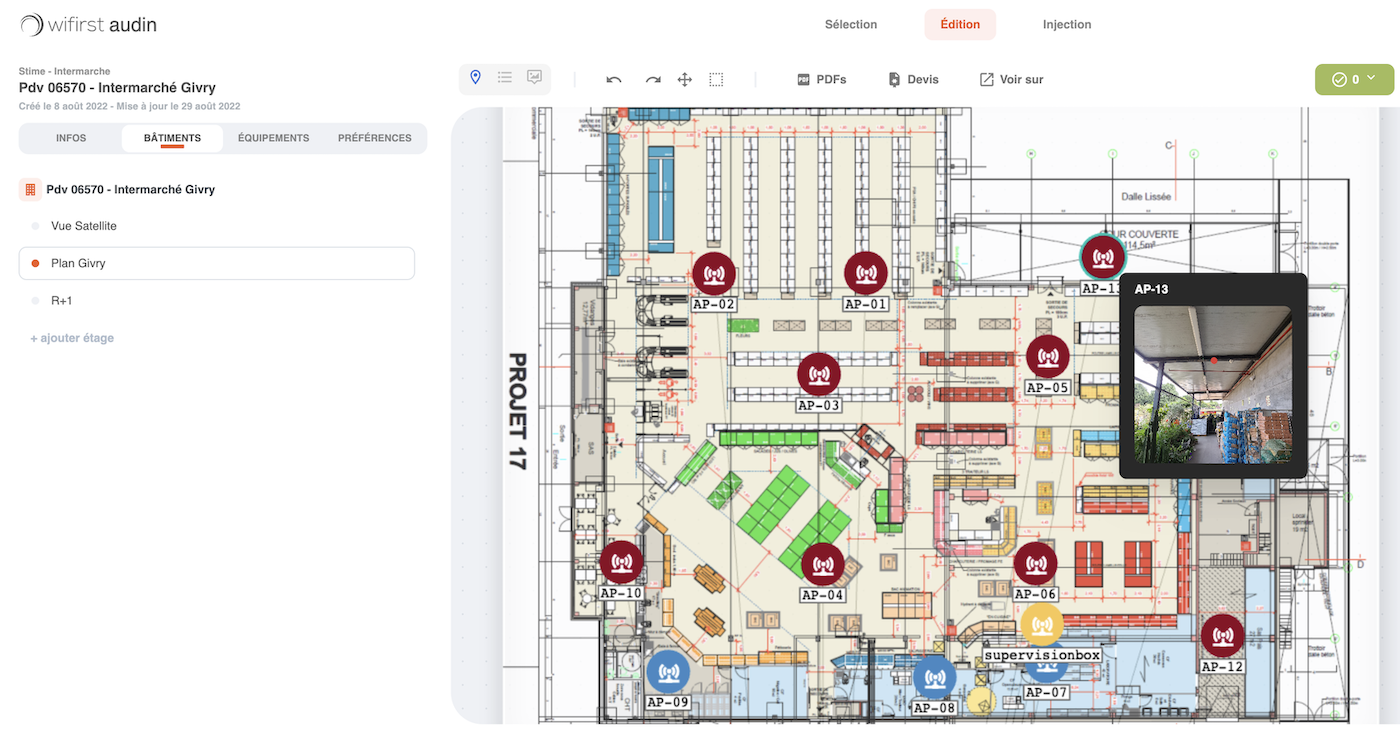A unified network for the successful digitalisation of Mousquetaires stores
Les Mousquetaires is the French leader in mass retailing and was founded in 1969. Over the years, the group has grown to include eight well-known brands: Intermarché, Netto, Bricomarché, Brico Cash, Bricorama, Roady, American Car Wash Company and Rapid Pare-Brise.
// AN EXTRAORDINARY PROJECT
STIME, the IT subsidiary of the Mousquetaires Group, has selected Wifirst to deploy and operate a multi-service wireless network
Nearly 4,000 points of sale are involved in this project, which is both strategically important and essential for the development of shops. There can be no successful digitalisation without a high-performance, secure, scalable and sustainable connectivity base.
The STIME specifications were very clear:
- Comprehensive radio coverage for seamless connectivity across all business and customer devices.
- Centralised management of identity and business authentication.
- Streamlined telecom infrastructure with a unified solution, simplifying the integration of new business applications managed by IT.
- Maintain an ambitious deployment pace—rolling out 120 stores each month.
The STIME was particularly attracted by Wifirst's technical approach, which consists of designing a unified network to do away with the multiplicity of networks and infrastructures deployed for each digital service, and thus optimise costs and operational performance.

// A WIDE RANGE OF COVERAGE AREAS
The wide variety of areas requiring coverage—and their unique constraints—presented a significant challenge for our Delivery teams.
The diversity of the brands, points of sale and spaces to be covered is such that extremely detailed procedures had to be drawn up to share installation instructions adapted to each of the situations encountered in the field (during the very important pre-visit phase).
- Indoor sales areas
- Outdoor sales areas (material yards and garden centres)
- Storage rooms
- Delivery bays
- Fresh airlock and freezer airlock
- Labs (butcher's, cheese, fish shops, etc.)
- Administrative / office areas
- Break rooms
- Petrol stations
Coverage of all these areas is essential to support mobility, reachability, operational continuity and productivity of all shop employees.
How should access points be fixed? Should they be placed horizontally or vertically? How do you ensure safe fixings on wooden, concrete or metal beams? In which areas should a cherry picker be used? Is it preferable to work at night?
The real success of Wifirst lies in the ability of the teams to carry out a real industrial project while adapting to all the constraints in the field.
// A MULTITUDE OF DEVICES TO CONNECT
ESLs, PDAs, tablets, cash registers, cameras, telephones, touchpads, smartphones... a real headache when it comes to optimising costs and improving security.
The range of use cases related to connectivity are endless. Wifirst has therefore built a single infrastructure capable of securely connecting all the different devices and applications. A rights management application for all terminals was also developed for the specific needs of the STIME.
Thus, all digital services are connected to a single Wifirst wireless network:
- Handheld terminals (PDA or tablet) to access business applications, to facilitate data entry, display and transmission.
- Touchpad with Webtelevente applications for taking orders by store shelf managers.
- Electronic labels (ESL / EEG): up to 50,000 labels for the largest hypermarkets
- Equipment related to food traceability
- Equipment related to video surveillance
- IP telephony

While the project was focused on business needs, visitors and customers were not left out. With the inclusion of a "Guest" access (to cope with the very uncertain 4G/5G coverage) with a captive portal, guests could use the retailer's applications to enhance the in-store experience.
// THE CONNECTED LABELS PROJECT
The best example of a multi-technology shared network.
Without a unified network, shops have to operate a WiFi network for the business terminals and an IoT network for the tags. They therefore pay for two deployments, they stack the equipment (additional energy costs), they create a radio interference problem…
The smartest solution is to use a single device to transmit both WiFi and IoT.

This is what Wifirst has done for the Mousquetaires Group. The WiFi terminals host an extension (see below) that embeds the IoT module of the label manufacturer chosen by the point of sale, in this case, Hanshow or SES-Imagotag.

// FOCUS ON THE KEY TO SUCCESS: AUDIN
The STIME project was the trigger to invest in developing our new audit and integration application.
AUDIN is a web and mobile platform that is at the heart of Wifirst's solution. This blog post discusses all the benefits that AUDIN offers and demonstrates how it is a highly differentiating element in our offering.

